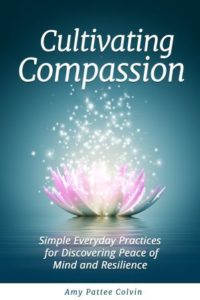If you’re familiar with self-improvement and personal growth techniques, you’ve likely seen terms such as guided imagery and visualization meditation (or creative or guided visualization). But what do these terms mean, and how are they similar or different?
Let’s start with a brief definition of each.
Guided Imagery
Guided imagery is a mental focus practice that involves most or all five senses. Positively engaging an array of senses begins to reset neural networks and generates well-being and health for the mind and body.
The term guided imagery is often interchanged with visualization and guided meditation, but it has its own set of techniques.
What is Guided Imagery
Guided imagery invites you to utilize all of your senses—scent, sound, sight, touch, and taste—to generate images in your mind that your body perceives as real external events.
This is not to say that you will truly be smelling, hearing, seeing, touching, and tasting objects while listening to guided imagery. Instead, your brain will visualize these things.
The emphasis on helping the listener engage all five senses is slightly different than the focus of guided meditation or guided visualization.
Because it heightens the mind-body connection, guided imagery may stimulate blood pressure and heart rate changes, as well as respiratory patterns.
Think of guided imagery as an amplified version of mentally reconstructing a food craving. When you imagine that tasty food, your salivary glands become active. Your mind and body connect over an image composed in your head that has touched each of your senses. Now, imagine what benefits you might gain if you could replicate soothing senses for stress management and pain relief.
Guided Imagery In Practice
As with any personal development practice, the more often you do it, the more natural it becomes.
When practicing guided imagery, settle into a relaxed atmosphere where you feel physically comfortable. Placing your hands on your chest or belly may be a helpful way to remain connected to your body during the exercise.
If your mind wanders away from the narrative you’re listening to, simply acknowledge the drift and return your attention to the audio track.
You can listen to audio tracks, or you can practice guided imagery on your own. If you’re practicing on your own, you may find these suggestions a helpful place to start.
First, reconstruct a pleasant memory. Bring to mind and body how your environment’s sensations, the aroma in the air, the temperature on your face and hands—it’s as if your favorite daydream becomes real. Rather than solely recalling what you see, try to connect with all of your senses.
Once you’ve become comfortable with the practice, you can begin imagining situations that you’ve not yet experienced or perhaps will never experience—landing on Jupiter, for example. Creating imaginary situations while engaging all your senses is a powerful method for reducing physical pain and stress, visualizing goals, and much more.
You’ll find me on Insight Timer, Idanim, and Siddha One (use promo code AMY25 for a 25% discount at Siddha One). They each have their strengths, and I’d love to have you join me on any of those platforms!
Benefits of Guided Imagery
Clinical studies show that guided imagery mediation reduces stress, relieves pain, and even lessens insomnia. The Mayo Clinic regularly uses guided imagery as a relaxation technique for surgery patients. Through studies, they learned that patients participating in guided imagery sessions needed less pain medication than those who didn’t.
Additionally, because guided imagery is multi-sensory, it’s often used to help a practitioner get in touch with subconscious levels of wisdom within them. Many people practice guided imagery to help envision and place themselves in their best, most healthy, and happy state.
Visualization Meditation
Guided visualization, visualization meditation, creative visualization, or just plain old visualization are all terms that refer to the same general concept. Visualization helps you put your imagination to work to modify your brain wiring for positive results.
Visualization involves creating a mental picture of an outcome of something before it’s happened.
This technique can be applied to whatever task is at hand—skiing a perfect line down untracked mountain snow, standing on a stage calmly and charismatically speaking to a large audience, recovering from surgery or illness, or effectively asking for a raise. Guided visualization helps us achieve health, wellness, personal growth, and peace of mind.
What is visualization?
I was first introduced to visualization in the early 80s through Shakti Gawain’s book, Creative Visualization, and I’ve used the technique regularly since. Widely used in the fields of personal development, sports, health, business, and creative arts, guided visualization uses mental imagery and occasional positive affirmations to produce beneficial life changes.
How does visualization work?
The brain thrives on visual stimuli. During a visualization exercise, the amygdala—the section of your brain responsible for fight or flight—had trouble differentiating between something the brain imagines and what is actually happening.
If you face a challenge, visualizing a positive outcome can help the brain believe the result is true.
Neuroplasticity—the brain’s ability to evolve and rewire—is enhanced by visualization. Simply changing your thoughts and creating visual images of positive outcomes affects your physical state and helps you achieve your goals.
Through visualization, you can alter an abstract hope into a picture that inspires you and guides you. When you envision the desired result, your brain can work toward creating it in real life.
Seven Benefits of Visualization
Numerous studies reflect the benefits of visualization. Whether you’re a professional athlete, public speaker, surgeon, or ordinary human working on personal development, research shows that visualization benefits performance in various circumstances.
Take time to give it a try and notice results for yourself.
- Improved performance Michael Phelps, the multiple Olympic gold medalist, found that visualizing every aspect of a winning streak, including the smallest details, helped him succeed time and again.
- Boosted confidence Picturing yourself achieving your desired goals makes them more tangible. In turn, you begin believing in your ability to get there.
- Increased focus Visualizing specific details associated with particular outcomes acts like a workout for your brain muscle. The more you exercise your brain, the better you’re able to maintain focus.
- Decreased levels of anxiety and stress No matter your profession, mentally imagining positive outcomes of a big event before it transpires in real life helps the event feel more familiar and decreases the levels of anxiety and stress associated with the event.
- Boosted immunity Your immune system is connected to your mind. Visualizing helps strengthen your immune system when combined with quality nutrition, sleep, and decreased stress levels.
- Alleviated chronic pain Visualization helps transform the brain and form new networks through neuroplasticity. New neural networks formed through neuroplasticity helps reduce chronic pain.
- Decreased depression Picture yourself beyond the dark fog of depression; visualize a point where you feel healthy and at ease. Seeing your strength through visualization gives you a visual story to go back to when the going gets rough
Visualization Meditation in Practice
If you’d like to practice a guided visualization meditation on your own, a nice place to start is a loving-kindness exercise.
Settle yourself into a comfortable position and drop your gaze or close your eyes. Relax your jaw and neck. Breathe deeply into your belly.
Bring to mind someone for whom you harbor positive feelings. Imagine them sending love to you—bask in it for a moment. If you’d like, picture the love like a warm golden light around your chest and heart. Imagine that warm light spreading through your entire body.
Now, reverse roles. Imagine yourself sending love to the other person. Visualize this love as the warm golden flowing from your body into the other person. Visualize the person’s posture relaxing and face smiling as they are bathed in this warm light.
After you are comfortable practicing this exercise with someone you feel positively about, consider expanding your horizons and imagine following the same visualization for a person you don’t know well. When that becomes comfortable, you can broaden your horizons and practice the exercise for a person you find to be difficult.
If you find these last two steps difficult, take a step back and think about an old friend or a place you enjoy. Visualizing someone or something you enjoy is an image that your mind naturally embraces, details and all, without much effort. Your mind may wander away into other thoughts, but be patient with yourself and guide your focus back with a light, gentle quality, avoiding self-judgment.
Remember, guided imagery and visualization meditation are like a muscle. Do your best to exercise it every day. Connect with apps like the ones listed above to help you create a visualization habit.
You’ll be pleased with the peace of mind, resilience, and joy you can attain.
If you’d like to learn more about guided imagery and guided visualization, or you want to strengthen skills you already have, check out an upcoming BodyMind IntelliSense or Compassion Cultivation Training program or join me for an International Spiritual Tour where we’ll time daily practicing visualization, compassion meditation, qigong, and tools to create a positive mindset while exploring beautiful landscapes and fascinating cultures.
Lastly, If I can be of any help or answer any questions, or if you’d simply like to discuss what program is the best fit for you, contact me to schedule a time to chat.











